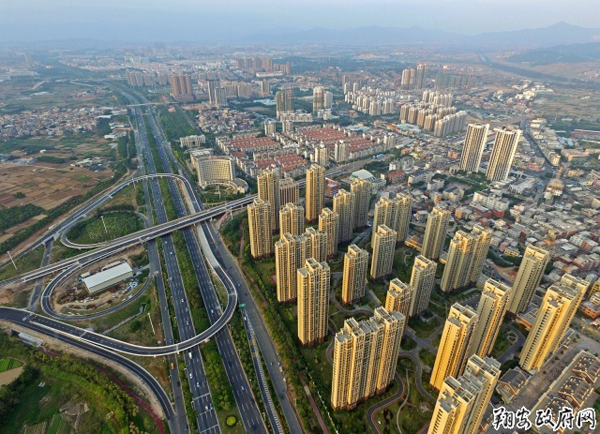Xiang'an District
chinadaily.com.cn| Updated: Apr 30, 2019

Officially set up on Oct 19, 2003, Xiang'an is the youngest administrative district in Xiamen, Fujian province, with the most vitality and huge development potential. It has a total land area of 420 square kilometers, of which 200 sq km is exploitable, as well as a sea area of 134 sq km and a 75 km coastline. There are four towns (Xindian, Maxiang, Xinxu and Neicuo) and one street (Dacheng Street) under its jurisdiction, with a total registered population of 320,000.
The district enjoys a favorable location in eastern Xiamen, adjacent to Quanzhou city, and faces Xiamen and the Kinmen islands across the sea. It boasts convenient land, sea and air transportation. The Xiang'an Airport is expected to be completed by 2020. A comprehensive network connecting the G324 national highway, the Shenyang-Haikou Expressway, the Fuzhou-Xiamen high-speed railway, and the Xiang'an subsea tunnel has been formed. The tunnel in particular opened to traffic in 2010 and has cut the time to Xiamen Airport and Xiamen Railway Station to less than 30 minutes.
The history of Xiang'an district can be traced back 1,720 years to when it became an administrative unit in the Western Jin Dynasty (265-316). This profound history has left the district with a number of historical sites and cultural relics, such as ancient building complexes and the former residences of well-known figures. Traditional customs are also well preserved, with visitors able to enjoy the breast-clapping dance, vehicle and drum array, and other folk culture. It is also home to rare marine creatures, such as the amphioxus, the Chinese white dolphin (sousa chinensis), and the horseshoe crab (tachypleus tridentatus). The district has famous scenic areas such as Xiangshan scenic spot and Damao Mountain Sports Park, and boasts a forest coverage rate of 30.7%.
Xiang'an, the nearest spot to Kinmen Island on the Chinese Mainland, has China's only small commodities trading market with Taiwan. Local music and opera troupes have performed in Taiwan several times and proved popular among the Taiwanese. It is the ancestral home of about 40,000 Taiwan people, and is also the hometown of more than 80,000 overseas Chinese and 60,000 overseas Chinese family members. Some of them are famous businessmen and social activists playing positive roles in overseas Chinese communities.
Though the district has a weak economic foundation, Xiang'an has been transforming with eye-catching economic growth, through which it has changed its focus from traditional agriculture to modern manufacturing, and developed from a rural township to an ecological costal area.
In 2016, the regional GDP of Xiang'an district was 38.5 billion yuan ($5.7 billion), a year-on-year increase of 9%. The added value of industries above a designated scale reached 25 billion yuan, increasing by 8.5%; investment on fixed assets reached 44 billion yuan, up 23.4%; total financial revenue reached 4.94 billion yuan, up by 13.3 %; and the total retail sales of consumer goods reached 5.3 billion yuan, up 19%. The per capita disposable income of urban residents hit 32,750 yuan, increasing 9.5%, while that of rural residents was 17,070 yuan, up 8.5%.
Xiang'an is designed to be the central coastal area of Xiamen city, the economic gateway of southern Fujian province, and the foreign exchange pilot zone of the Economic Zone on the West Side of the Straits. It strives to make leapfrog development in industry, urban construction and people's well-being.



 play
play